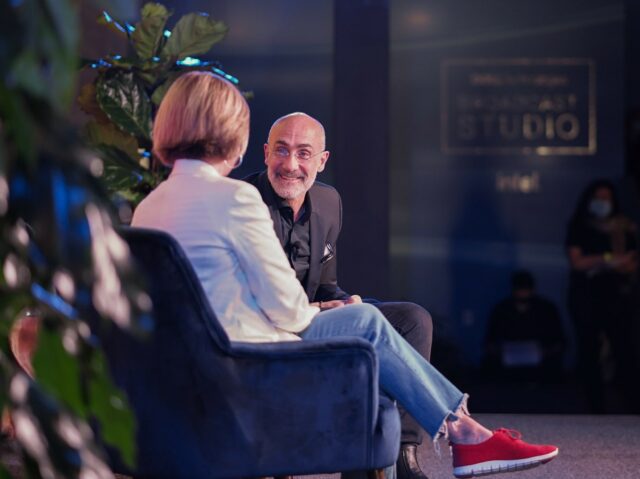By Sara Alvarez Kleinsmith, thought leadership, Dell Technologies
In 2022, companies are putting empathy and flexibility at the forefront of their work culture. With the rise in availability of remote work, flex schedules and empathetic leadership, employees who aren’t being offered these advantages are leaving their posts in droves. Known widely as the Great Resignation, this time signals a transition that all businesses need to take seriously. Empathy and consideration for employees’ wellbeing are gaining traction due to the toll the pandemic has taken on workers’ mental health. Rising rates of depression, anxiety and collective dissolution have caused many to seek meaning in what they do.
The importance of meaning in work
 According to Breakthrough, new research from Dell Technologies, more than three-quarters (76%) of employees (10,500 respondents from 40+ countries) consider their job to be a core part of their identity. This means that businesses have a responsibility to ensure that their people’s identity is an affirming, uplifting one that truly values mental health and work/life balance. It’s now up to every organization and individual to find the meaning in what they do to sustain and cultivate lasting happiness. The good news is there’s a science to that art.
According to Breakthrough, new research from Dell Technologies, more than three-quarters (76%) of employees (10,500 respondents from 40+ countries) consider their job to be a core part of their identity. This means that businesses have a responsibility to ensure that their people’s identity is an affirming, uplifting one that truly values mental health and work/life balance. It’s now up to every organization and individual to find the meaning in what they do to sustain and cultivate lasting happiness. The good news is there’s a science to that art.
Arthur Brooks is a columnist for the Atlantic and the host of the podcast “How to Build a Happy Life.” He also teaches a course on happiness at the Harvard Business School. He shared information he’s learned from his decades of studying happiness in a session titled “The Meaning of Meaningful Work” at the 2022 South by Southwest conference. Brooks shed light on how the pandemic has changed work-life for good and how leadership in the future is about empathy in action.
A pandemic of loneliness and uncertainty
In 2020, companies that had been doing business in person began using a hybrid or remote option for workers whenever possible to reduce the transmission of Covid-19. Even after the availability of vaccines, many are continuing to provide these flex work options. Brooks regards these changes as neither negative nor positive, but he opined that they are here to stay. This transition, he says, creates great opportunities for growth. According to Brooks, when we face challenges or crises, we must analyze, solve, learn and grow.
Brooks noted that since the pandemic, more Americans are suffering from symptoms of mental illness. Prior to 2020, 9.5% of Americans suffered from depression. Since the start of the pandemic, that figure has risen to 28%. Surgeon General Vivek Murthy called this period “The Loneliness Epidemic” on a 2021 episode of Brooks’s podcast. Uncertainty and isolation caused by the pandemic have left people craving a sense of normalcy and regular human contact. This isn’t strictly an American problem. While hybrid work connects workers globally, it presents issues with connectivity (both emotionally and technologically). According to Breakthrough, 50% of respondents believe staff struggle to collaborate remotely and/or connect relationally.
Creating happiness
So, what can organizations do to create emotional connections? Brooks ventured that there are tangible ways to find deeper meaning and help others do the same. Since we are experiencing a collective uptick in the production of stress hormones (cortisol and adrenaline), we need to create and find meaningful connections between what we do, who we work with and what excites us in order to find happiness. This may be easier than we realize. Also known as the “love hormone,” oxytocin is a neuropeptide that comes from affection and eye contact. As humans regain the opportunities to travel, see loved ones regularly and work and learn in person, this will positively affect our collective mental health.
Brooks also suggested metacognition to regulate our emotions. Examples include journaling, meditation, therapy or talking to a friend. All of these are ways to move our thoughts from our limbic system to the prefrontal cortex, causing us to find a sense of calm in times of stress or uncertainty. Greater detail on mindfulness as a path to wellness can be found in a 2020 episode of Trailblazers. As a happiness expert, Brooks shared his findings on the four most common traits of happy people. They are:
- Having a spiritual path. This can mean a religious practice or metacognition or mindfulness.
- Having loving family relationships. This encompasses relationships with families of origin, blood or choice.
- Having REAL friends. These friends can include colleagues. According to Brooks, 70% of people have a best friend at their place of work.
- Having a sense of meaning or purpose. This can refer to work, earning success or serving others.
Leadership in the new age of empathy
We predicted in 2020 that empathy would be at the forefront of work-life at the beginning of the pandemic. Now, considering that stress is at a national high, person-to-person contact is still infrequent, and people are resigning at an unprecedented rate, empathy in leadership has never been more important. But Brooks says that empathy alone isn’t enough to be a good leader.
For managers, captains of industry and CEOs to meet this moment, they must lead with both empathy and compassion. They shouldn’t just seek to identify with someone’s suffering; they should also seek to alleviate it. With both, companies can protect their people through periods of uncertainty and emerge stronger and more united as a result. Even amongst trials and tribulations, they can build a future that works for all.

